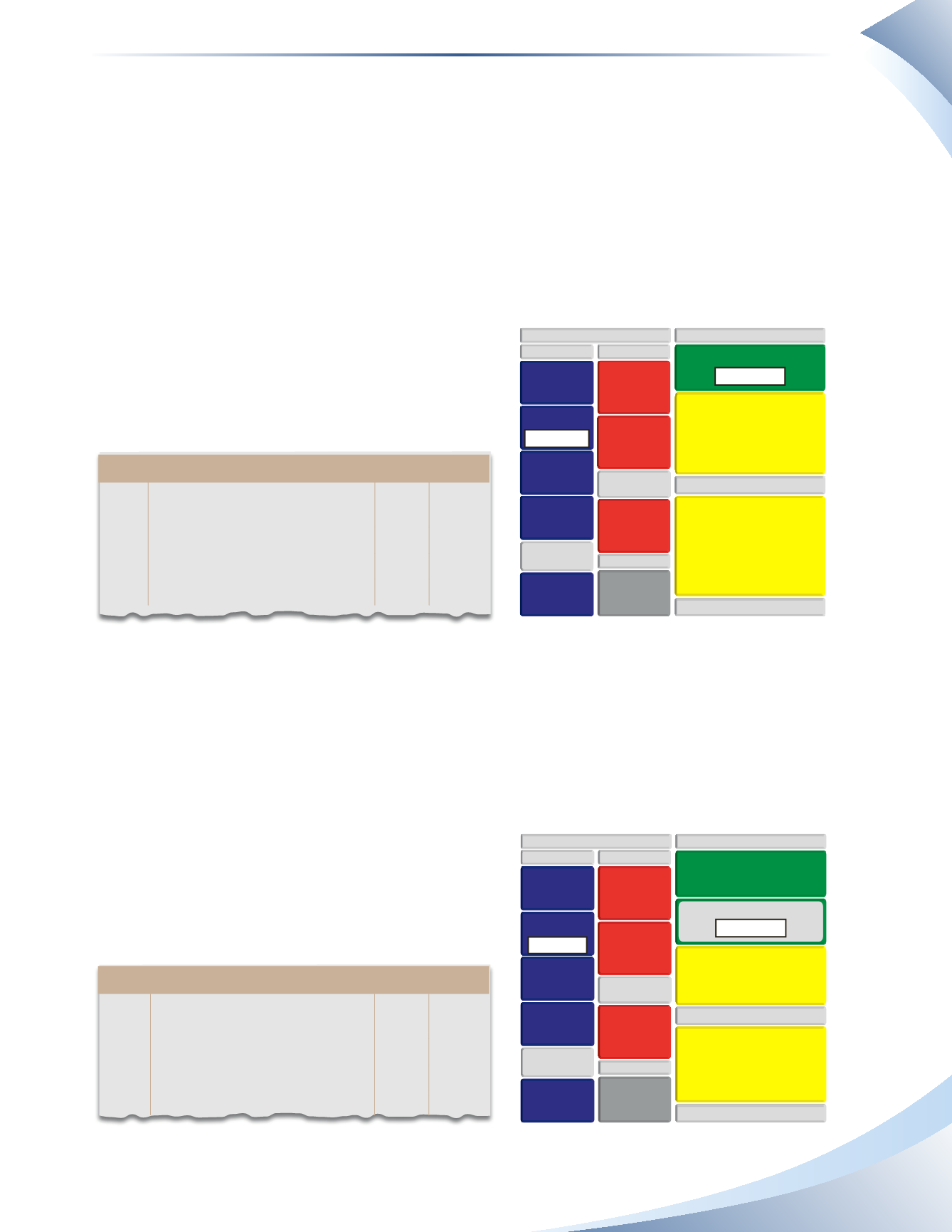
209
sales
The major difference between the periodic and perpetual system occurs at the point of sale. Unlike
the perpetual system which immediately records cost of goods sold when revenue from the sale
of inventory is recognized, the periodic system calculates cost of goods sold at the end of the
period when ending inventory is determined with a physical count. Assuming inventory is sold on
account, the entry should be recorded by debiting accounts receivable and crediting revenue.
Assume Tools 4U sold $13,000 of goods for $20,000 on January 15. In a periodic system, this
transaction would be recorded as in Figure 7A.10.
The entry is recorded by debiting accounts receivable
and crediting sales. The cost of goods sold and
inventory accounts are not updated immediately.
Instead, they will be updated at the end of the period
when the physical count is taken.
Sales Returns
If a customer returns goods, in a periodic inventory system, only one journal entry is required
to record the sales return and credit the amount owing from the customer (assuming the goods
were sold on account).The journal entry for a return of $4,000 worth of goods by a customer on
January 16 is shown in Figure 7A.11.
The entry is recorded by debiting sales returns and
allowances and crediting accounts receivable. Unlike
the perpetual inventory system, the cost of goods sold
and inventory are not updated immediately.
Journal
Page 1
date
2016
account title and explanation debit Credit
Jan 15 Accounts Receivable
20,000
Sales
20,000
Record sales on account
____________
fIGuRe 7A.10
+ $20,000 CR
INCOME STATEMENT
GROSS PROFIT
OPERATING EXPENSES
SALES REVENUE
COST OF GOODS SOLD
BALANCE SHEET
CURRENT ASSETS
CASH
INVENTORY
ACCOUNTS
RECEIVABLE
PREPAID
EXPENSES
PROPERTY, PLANT
& EQUIPMENT
LONG-TERM
ASSETS
ACCOUNTS
PAYABLE
BANK LOAN
CURRENTLIABILITIES
UNEARNED
REVENUE
LONG-TERM
LIABILITIES
OWNER’S EQUITY
OWNER’S
CAPITAL
OPERATING INCOME
+ $20,000 DR
Journal
Page 1
date
2016
account title and explanation debit Credit
Jan 16 Sales Returns and Allowances
4,000
Accounts Receivable
4,000
Record sales return
____________
fIGuRe 7A.11
SALES RETURNS & ALLOWANCES
INCOME STATEMENT
GROSS PROFIT
OPERATING EXPENSES
SALES REVENUE
COST OF GOODS SOLD
BALANCE SHEET
CURRENT ASSETS
CASH
INVENTORY
ACCOUNTS
RECEIVABLE
PREPAID
EXPENSES
PROPERTY, PLANT
& EQUIPMENT
LONG-TERM
ASSETS
ACCOUNTS
PAYABLE
BANK LOAN
CURRENTLIABILITIES
UNEARNED
REVENUE
LONG-TERM
LIABILITIES
OWNER’S EQUITY
OWNER’S
CAPITAL
OPERATING INCOME
– $4,000 CR
+ $4,000 DR
Inventory: Merchandising Transactions
Chapter 7 Appendix


